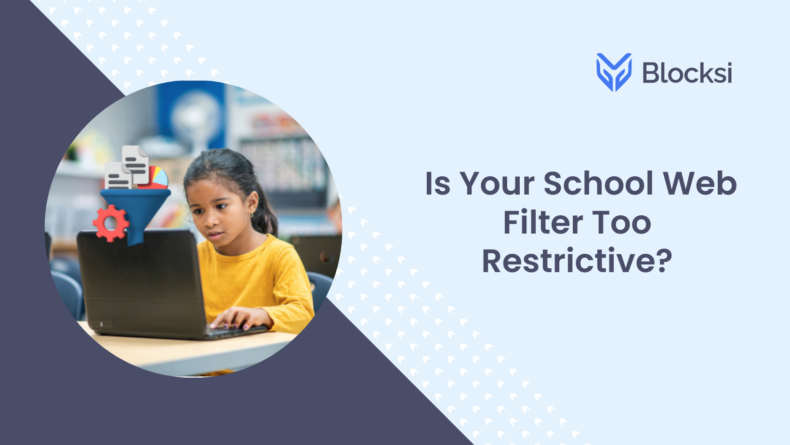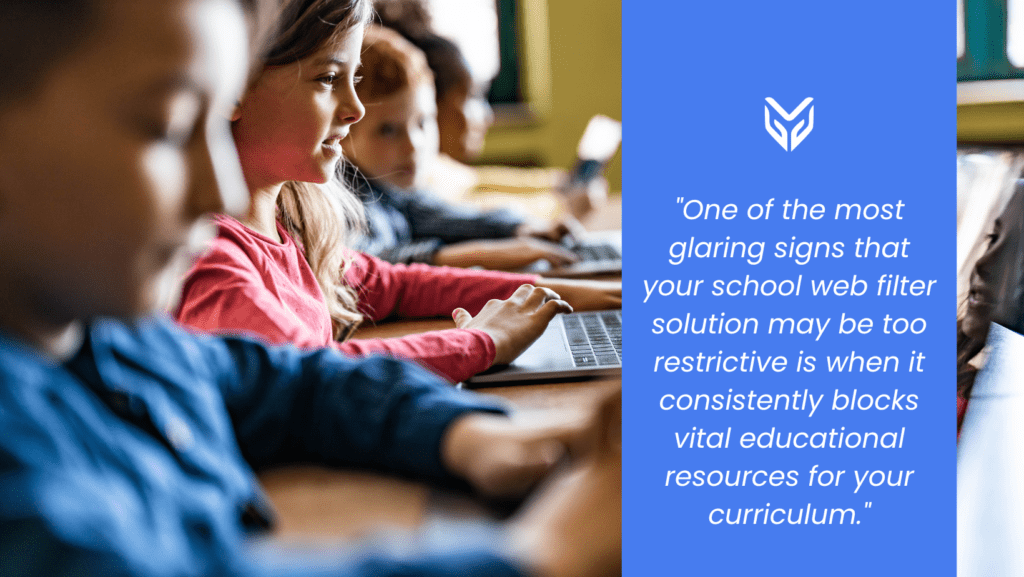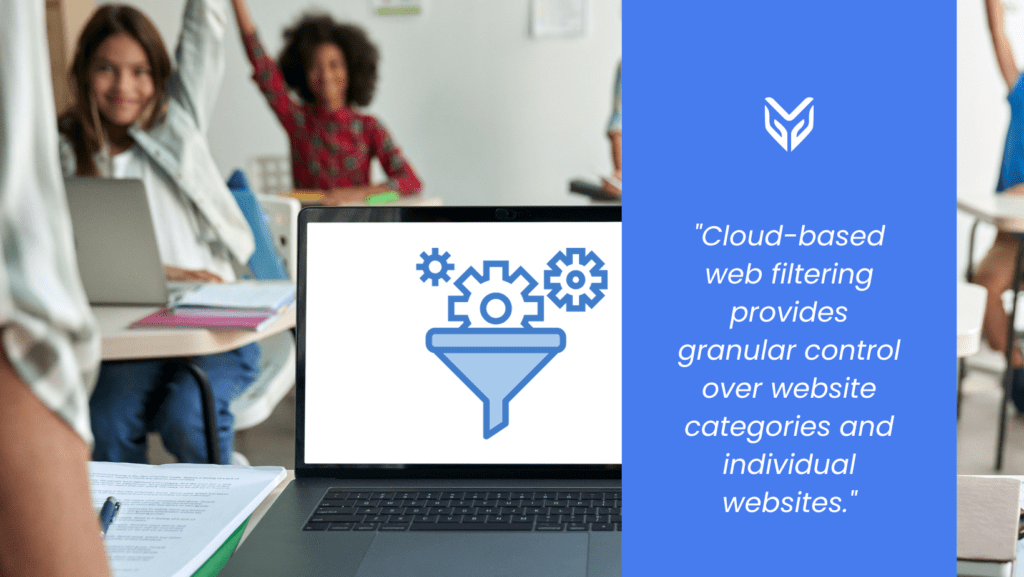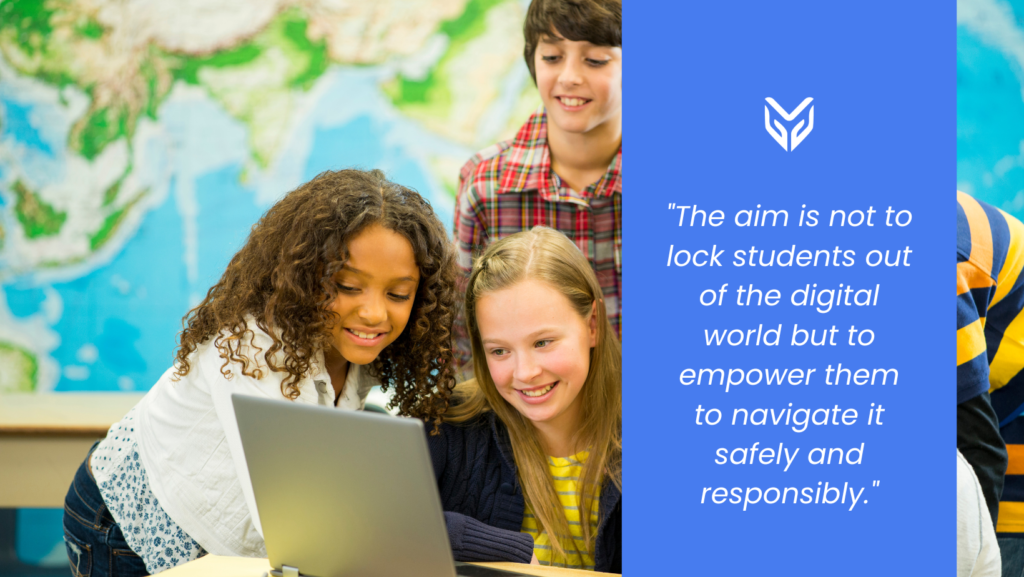NEWS
Is Your School Web Filter Too Restrictive?

Ensuring students can use the internet safely without being over-restricted is one of the biggest challenges of today’s classrooms. When it comes to student internet access, modern schools face a delicate balancing act. On the one hand, it’s crucial to provide a safe online environment free from harmful content, but on the other hand, over-restrictive web filters can hinder educational opportunities. This blog post explores the question: Is your school web filter too restrictive?
The Need for Content Filtering in Schools
As educators and tech directors, we understand the importance of keeping students safe online. The internet is a vast space filled with both valuable educational resources and potentially harmful content. Content filtering for schools is essential in safeguarding students from inappropriate websites, cyberbullying, and other online threats.
However, the key challenge is to strike the right balance between safety and access. Overly restrictive filters can block valuable educational websites, research materials, and even essential tools students and teachers need for effective learning and teaching.
Signs of an Overly Restrictive School Content Filter Solution
1. Blocked Educational Resources
One of the most glaring signs that your school web filter solution may be too restrictive is when it consistently blocks vital educational resources for your curriculum. If teachers and students frequently encounter “access denied” messages when accessing legitimate websites, it’s time to reevaluate your filtering settings.

2. Limited Customization
Content filtering for schools should be a flexible tool that allows you to customize its settings according to your school’s unique needs. If your current filter lacks the option to fine-tune its settings, you may find it challenging to strike the right balance between safety and access.
3. Frustrated Teachers and Students
When you consider your school web filter too restrictive, it becomes an obstacle rather than a tool. This can lead to frustration among both teachers and students. Educators may find it challenging to incorporate online resources into their lessons, while students may feel restricted in conducting research and learning independently.
The Benefits of Cloud-Based Web Filtering
Flexibility and Scalability
One effective solution to address the challenge of an overly restrictive school content filter is to transition to a cloud-based web filtering system. Unlike traditional, on-premise solutions, cloud-based filters offer greater flexibility and scalability. They allow tech directors to adjust filtering rules in real-time, ensuring the balance between safety and access is maintained.
Granular Control
Cloud-based web filtering provides granular control over website categories and individual websites. This means applying precise filtering measures against a massive database of websites and allows you to customize filtering rules to suit different grade levels, subjects, or even specific classes. With this level of control, you can ensure that each student has access to the resources they need while still maintaining a safe online environment.

Real-Time Threat Detection
When striving to reap multiple benefits and get the best results, look for a filtering solution that also offers student safety functionalities to achieve top K-12 online security. In addition to cloud-based content filtering, solutions like Blocksi often also offer real-time K-12 threat detection capabilities. This means using cutting-edge AI technology to identify and address potential risks in real-time, including image and video blurring, and detecting threats, such as self-harm and cyberbullying.
Thus, the software can identify and block malicious websites or content as soon as it appears online, enhancing the overall security of your school’s network.
Finding the Right Balance
The question of whether your school content filter is too restrictive is a crucial one. While safety is paramount, providing students with access to the vast educational resources available online is equally important.
As tech directors and educators, your goal is to create a secure and enriching online environment for your students. And remember, the aim is not to lock students out of the digital world but to empower them to navigate it safely and responsibly.

A cloud-based web filtering solution, like Blocksi, offers the flexibility and control needed to balance safety and access. Allowing you to pick across 30 YouTube and 85 web categories, your students’ online activities are comprehensively and granularly filtered, ensuring AI eliminates threats in real-time. At the same time, the granular technology ensures that potentially harmful or inappropriate content is evaluated to determine whether it is really unsafe or not. For example, learning about the human reproductive system is a part of learning and should not be marked as inappropriate.
Additionally, Blocksi is particularly unrestrictive and adjustable regarding device compatibility, supporting various devices, including Chromebook, MacOS, Windows OS, and iOS. Its scalability covers accommodating expanded workloads and growing network demands effectively.
So, is your school web filter too restrictive? It’s a question worth asking, and we can help you answer it to benefit your entire school community.
SOURCES
[1] 7 Benefits Of EdTech In The Classroom
[2] How can educational institutes build online safety for students?





